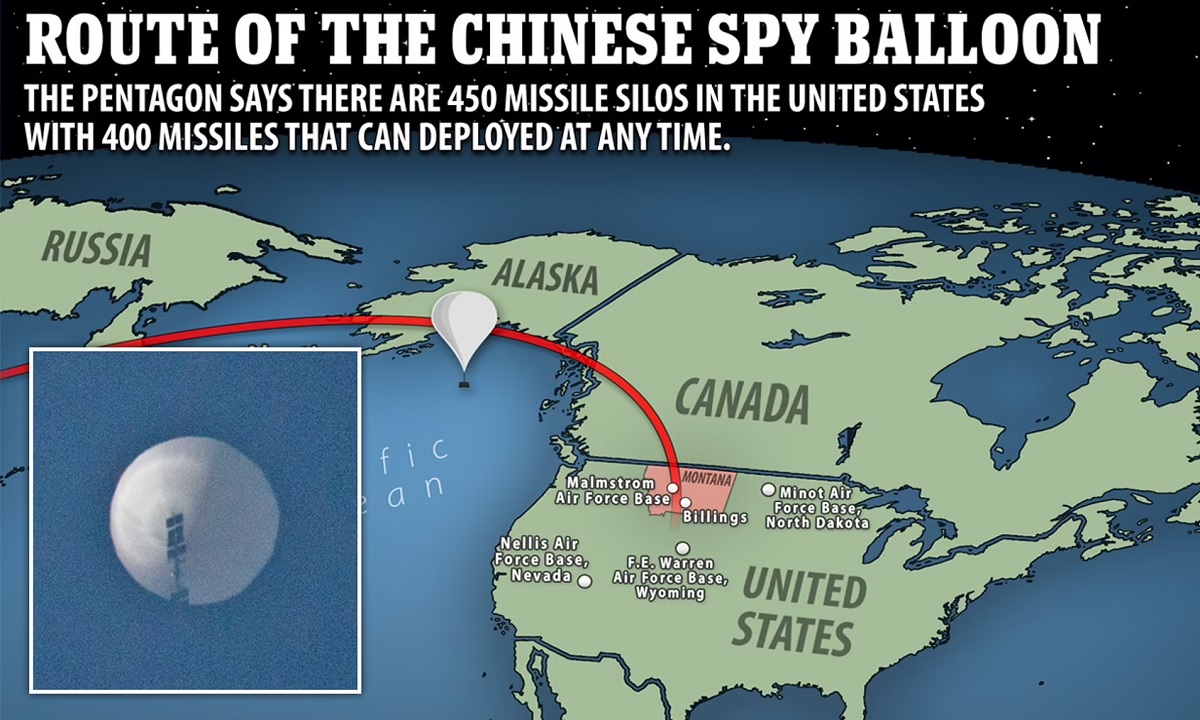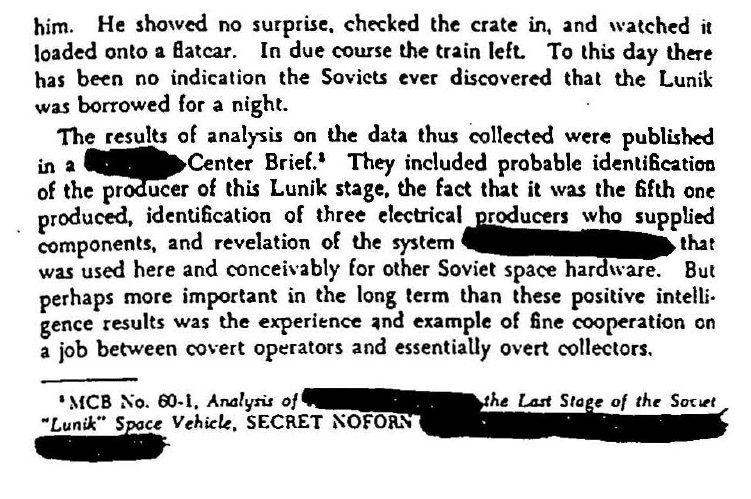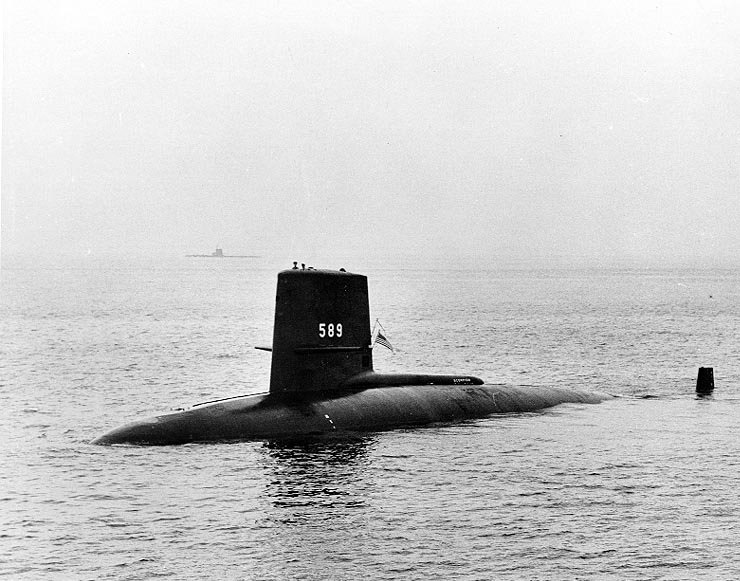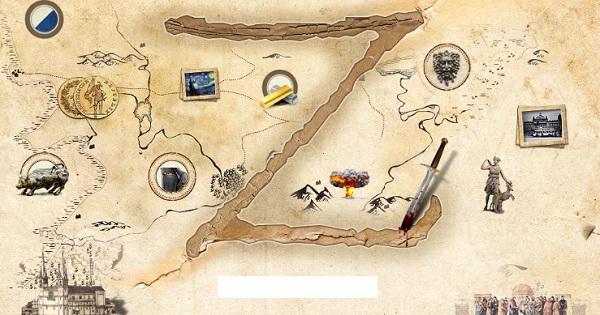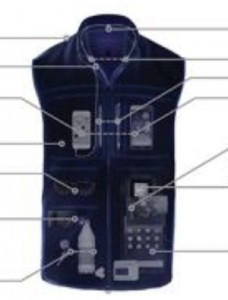A number of years ago the Soviet Union toured several countries with an exhibition of its industrial and economic achievements. There were the usual standard displays of industrial machinery and models of power stations and nuclear equipment.
Of greater interest to the CIA were apparent models of the Sputnik and Lunik space vehicles. U.S. intelligence twice gained extended access to the Lunik- the second time even borrowing it overnight and returning it before the Soviets missed it.
This is a true story of close cooperation between covert and overt intelligence components.
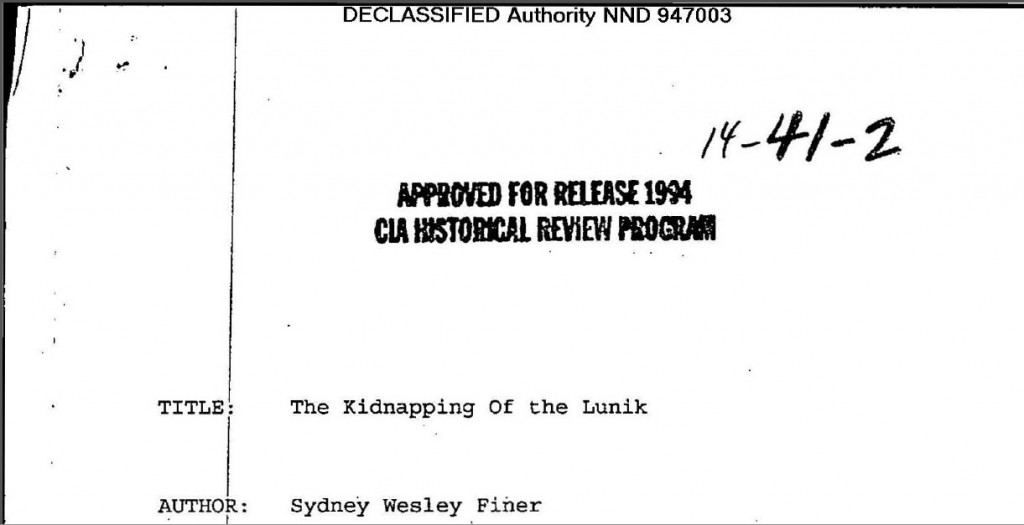
On View Abroad
The Soviets. had carefully prepared for this exhibition tour; most of the display material was shipped to each stop well in advance. But as their technicians were busily assessing the various items in one exhibition hall they received a call informing them that another crate had arrived. They apparently had not expected this item and had no idea what it was, because the first truck they dispatched was too small to handle the crate and they had to send a second.
The late shipment turned out to be the last-stage Lunik space vehicle, lying on its side in a cabin-like crate approximately 20 feet long and 11 feet wide with a roof about 14 feet high at the peak. It was unpacked and placed on a pedestal. It had been freshly painted. and three inspection windows cut in the nose section permitted a view of the payload instrument package with its antenna.
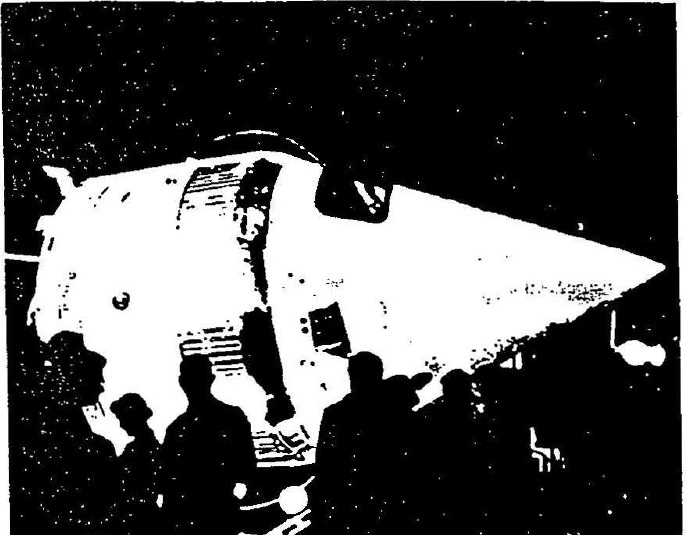
It was presumably a mock-up made especially for the exhibition; the Soviets would not be so foolish as to expose a real production item of such advanced equipment to the prying eyes of imperialist intelligence. Or would they? A number of analysts in the U.S. community suspected that they might, and an operation was laid on to find out. After the exhibition closed at this location, a group of intelligence officers had unrestricted access to the Lunik for some 24 hours.
DECLASSIFIED Authority NND 947003
The Lunik
They found that it was indeed a production item from which the engine and· most electrical and electronic components had been removed. They examined ·it thoroughly from the ·viewpoint of probable. performance, taking measurements, determining its structural characteristics estimating engine size, and so forth but not with sufficient detail or precision to permit a definitive identification of the producer or determination of the system used. It was therefore decided to try to get another access for a factory team.
Plans and Problems
As the exhibition moved from one city to another, an intercepted shipping manifest showed an item called .. models of astronomic apparatus whose dimensions were approximately those of the Lunik crate. This information was sent to the CIA Station nearest the destination with a request to try to arrange secure access if the Lunik should appear. On the basis of our experience at trade fairs and other exhibitions, we preferred access before opening of an exhibition to the alternatives of examining it while in the exhibition hall or after it had left the grounds for another destination.
Soon the Lunik crate did arrive and was taken to the exhibition grounds. The physical situation at the grounds, however, ruled out access to it prior to the show’s opening. Then during the show the Soviets provided their own 24 -hour guard for the displays, so there was no possibility of making a surreptitious night visit. This left only one chance: to get to it at some point after it left the exhibition grounds. In the meantime our four-man team of specialists from the Joint Factory Markings Center had arrived. We brought along our specialized photographic gear and basic tools. We each went out and bought a set of local clothes, everything from the skin out.
We held a series of meetings with Station personnel over the course of a week, mutually defining capabilities and requirements, laying plans for access and escape, and determining what additional equipment we would need. The Station photographed the Lunik crate repeatedly so we would get a better idea of its construction. ~
Photographs showed that the sides and ends were bolted together from within; the only way to get inside was through the roof. We therefore bought more tools and equipment-ladders, ropes, a nail puller, drop lights, flashlights, extension cords, a pinch bar, a set of metric wrenches, screwdrivers, hammers.
After the exhibition the displays would be carried by truck from the exhibition grounds toa railroad station and loaded onto freight cars for their next destination. For the interception we had to choose between the truck run and the rail haul. The initial preference was for the latter; it seemed the freight car carrying the Lunik might most easily be shunted onto a siding (preferably into a warehouse) for a night and resume its journey the next morning. A detailed check of our assets on the rail line however, showed no good capability for doing this. Careful examination of the truckage to the station, on the other hand, revealed a possibility.
DECLASSIFIED Authority NND 947003
Lunik
Lunik on Loan
As the exhibition materials were crated and trucked to the rail yard, a Soviet checker stationed at the yard took note of each item when it arrived. He had no communications bade to his colleagues at the fair grounds, however. It .was arranged to make the Lunik the last truckload of the day to leave the grounds. When it left it was preceded by a Station car and followed by another; their job was to determine whether the Soviets were escorting it to the rail yard.
When it was clear that there were no Soviets around, the truck was stopped at the last possible tum-off, a canvas was thrown over the crate, and a new driver took over.
The original driver was escorted to a hotel room and kept there for the night. The truck was quickly driven to a salvage yard which had been rented for the purpose. This yard was open to the sky but had a10-foot solid wood fence around it. With some difficulty the truck was backed in from a narrow alley and the gates closed; they just cleared the front bumper. The entire vicinity was patrolled by Station cars with two-way radios maintaining contact with the yard and the Station .
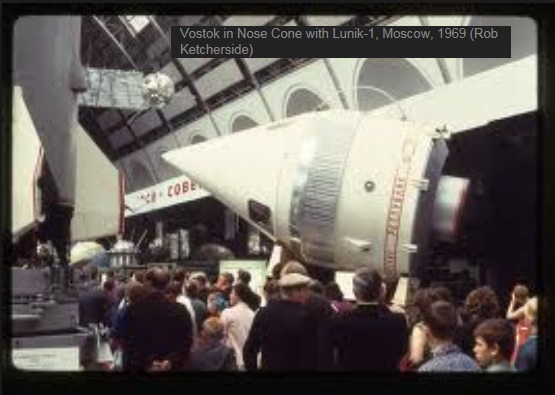
Action was suspended for half an hour: Everything remained quiet in the area, and there· was no indication that the Soviets suspected anything amiss. The Soviet stationed at the rail yard waited for a short time to see whether any more truckloads were coming then packed up his papers and went to supper. After eating he proceeded to his hotel room, where he was kept under surveillance all night.
The markings team, in local clothes and without any identification, were cruising in a car some distance from the salvage yard. We were now given the all-clear to proceed to the yard and start work.We arrived about 7:30 p.m. and were let in by a two-man watch and communications team from the Station. They had put all our equipment and tools in the yard and food and drink for the night.
Our first task was to remove enough of the crate’s roof to get in. It was made of 2-inch tongue-and-groove planks nailed down with 5-inch spikes. Two members of the team went to work on these, perspiring and panting in the humid air. The effort not to leave traces of our forced entry was made easier by the fact that the planks had been removed and put back several times before and so were already battered.
DECLASSIFIED Authority NND 947003
The Lunik
While this was going on there was a rather unnerving incident. When we had arrived at the salvage yard it was dark; the only lights were in the salvage company’s office. Now, with two men on top of the crate prying up planks, street lamps suddenly came on, flooding the place with light. We had a few anxious moments until we learned this was not an ambush but the normal lamp-lighting scheduled for this hour.
Photographers at work
The other two of us meanwhile were assembling the photographic gear and rigging up the drop lights with extension cords. We had ladders up at each end of the crate, and when the planks were off we dropped another ladder inside each end. The Lunik in its cradle was almost touching the sides of the crate, so we couldn’t walk from one end to the other inside.
Half the team now climbed into the front–nose–end with one set of photographic equipment and a drop light. . They pulled the canvas back over the opening to keep the flash of the strobe units from attracting attention.· They removed one of the inspection windows in the nose section, took off their shoes so as to leave no telltale scars on the metal surface, and squeezed inside. The payload orb was held in a central basket, with its main antenna probe extended more than half way to the tip of the cone. They filled one roll of camera film with close-ups of markings on it and sent this out via one of the patrolling cars for processing, to be sure that the camera was working properly and the results were satisfactory. The word soon came back that the negatives were fine, and they continued their work.
We on the other half of the team had tackled the tail section. Our first job was to gain access to the engine compartment by removing the Lunik’s large base cap; this was attached to its flange by some 130 square-headed bolts. We removed these with a metric wrench and by using a rope sling moved the heavy cap off to one side.
Inside the compartment the engine had been removed, but its mounting brackets, as well as the fuel and oxidizer tanks, were still in place. At the front end of the compartment, protruding through the center of .a baffle plate that separated the nose section from the engine, was the end of a rod which held the payload orb in place.
A four-way electrical outlet acting as a nut screwed onto the end of this rod was keyed by a wire whose ends were encased in a plastic seal bearing a Soviet stamp. The only way to free the orb so as to let the nose team into the basket in which it rested was to cut this wire and unscrew the outlet.
DECLASSIFIED Authority NND 947003
The Lunik
We checked with Station personnel and were assured they could duplicate the plastic, stamp, and wire. So we decided to go ahead and look for markings in the basket area. We cut the wire and passed it to one of the patrolling cars. The pair in the nose section photographed or hand copied all items in the basket area while we did those in the engine compartment. The Soviets, in removing all electrical connections and gear, had overlooked two couplings in the basket; these we took back to headquarters for detailed analysis.
Before we had finished, the new seal-wire, plastic, and stamp was delivered to the yard.
Returned in Good Condition
The exploitation of the Lunik was now complete; all that remained was to put things back together and close up the crate. The first job, re-screwing the orb in its basket, proved to be the most tricky and time-consuming part of the whole night’s work. The baffle plate between the nose and engine compartments prevented visual guidance of the rod into position, and the rod was just long enough to screw the outlet on beyond the baffle plate. We spent almost an hour on this, one man in the cramped nose section trying to get the orb into precisely the right position and one in the engine compartment trying to engage the threads on the end of a rod he couldn’t see. After a number of futile attempts and many anxious moments, the connection was finally made, and we all sighed with relief.
The wire was wrapped around the outlet and its ends secured in the plastic. The nose and engine compartments were double-checked to make sure no telltale materials such as matches, pencils, or scraps of paper had been left inside. The inspection window was replaced in the nose section, and with some difficulty the base cap was bolted into position. ·After checking the inside of the crate for evidence of our tampering we climbed out. The ladders were pulled up, the roof planks nailed into place, and the canvas spread back over. We packed our equipment and were picked up by one of the cars at 4:00a.m.
At 5:00 a.m. a driver came and moved the truck from the salvage yard to a prearranged point. Here the canvas cover was removed and the original driver took over and drove to the rail yard. The Soviet who had been checking items as they arrived the previous day came to the yard at 7:00 a.m. and found the truck with the Lunik awaiting him.
DECLASSIFIED Authority NND 947003
He showed no surprise, checked the crate in, and watched it loaded onto a car. In due course the train left. To this day there has been no indication the Soviets ever discovered that the Lunik was borrowed for a night.
The results of analysis on the data collected were published in a Center Brief. They included probable identification of the producer of this Lunik stage, the fact that it was the 6fth one produced, identification of three electrical producers who supplied components, and revelation of the system that was used here and conceivably for other Soviet space hardware. But perhaps more important in the long term than these positive intelligence results was the experience and example of fine cooperation on a job between covert operators and essentially overt collectors.
